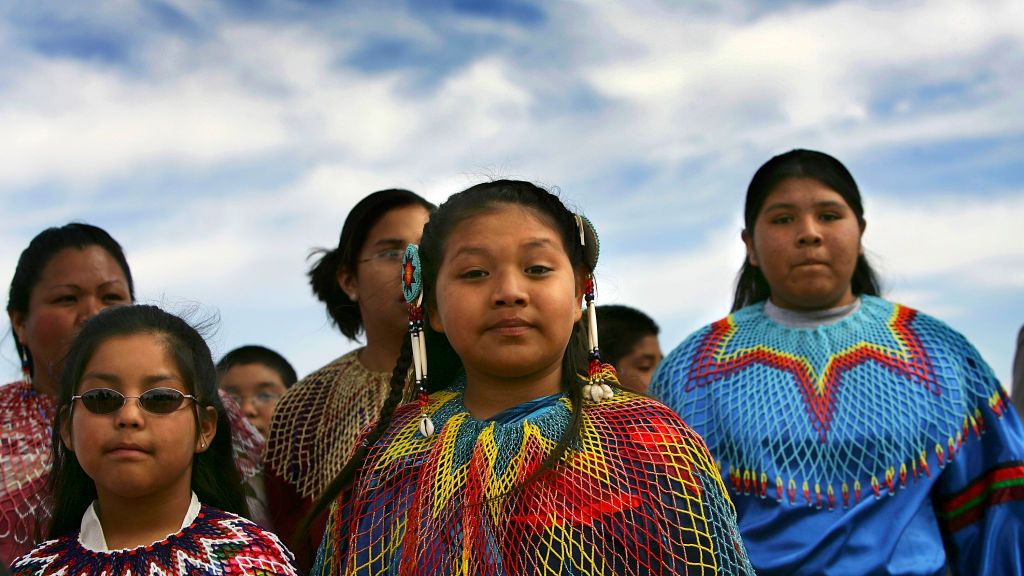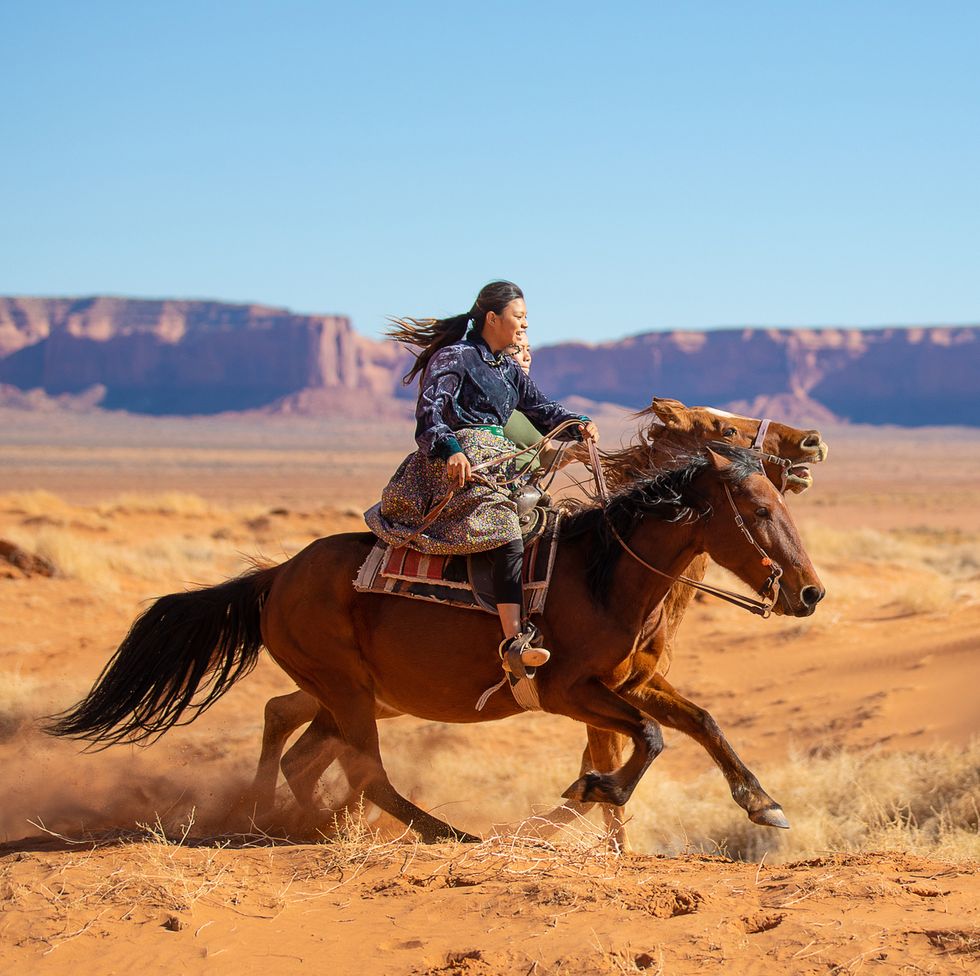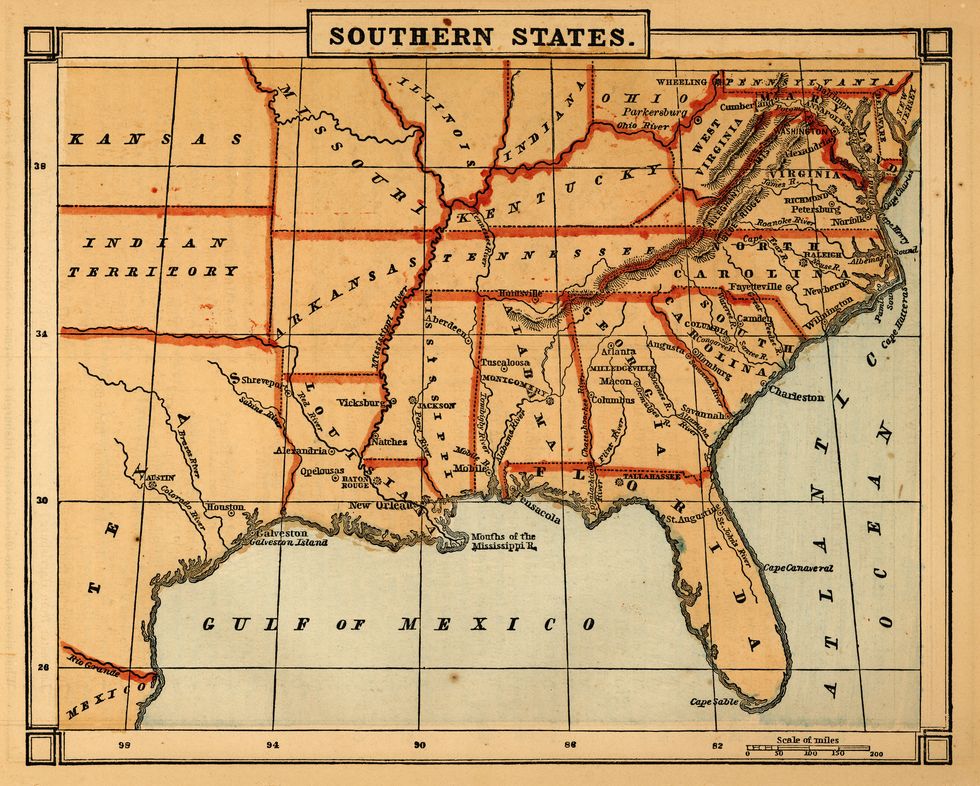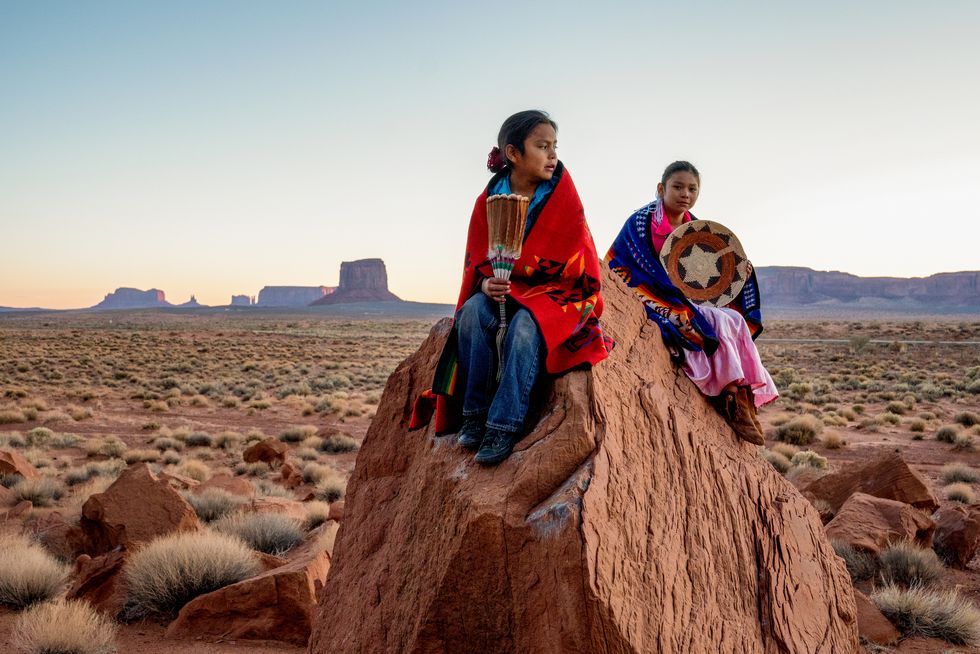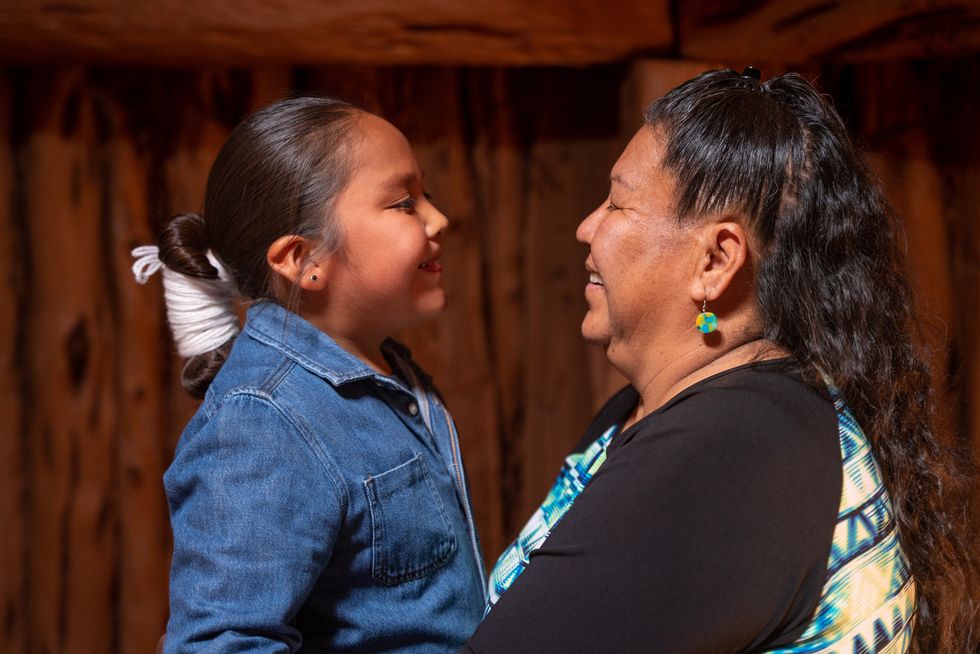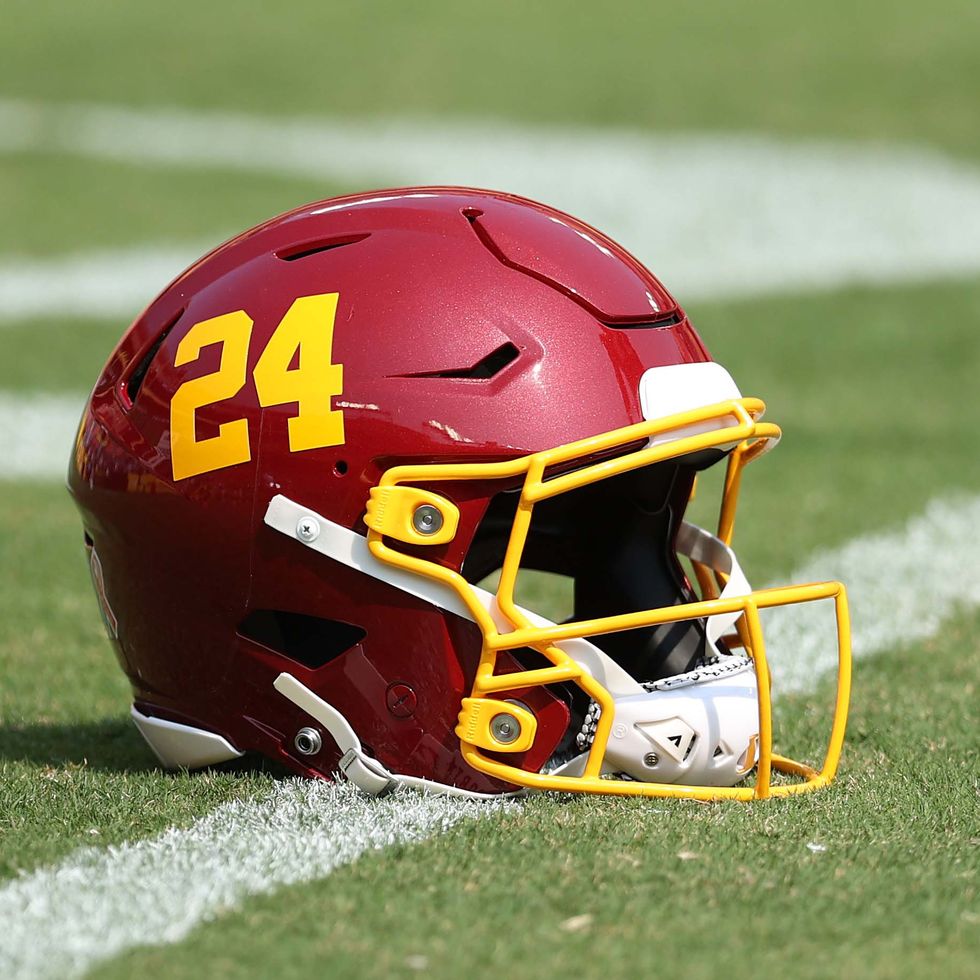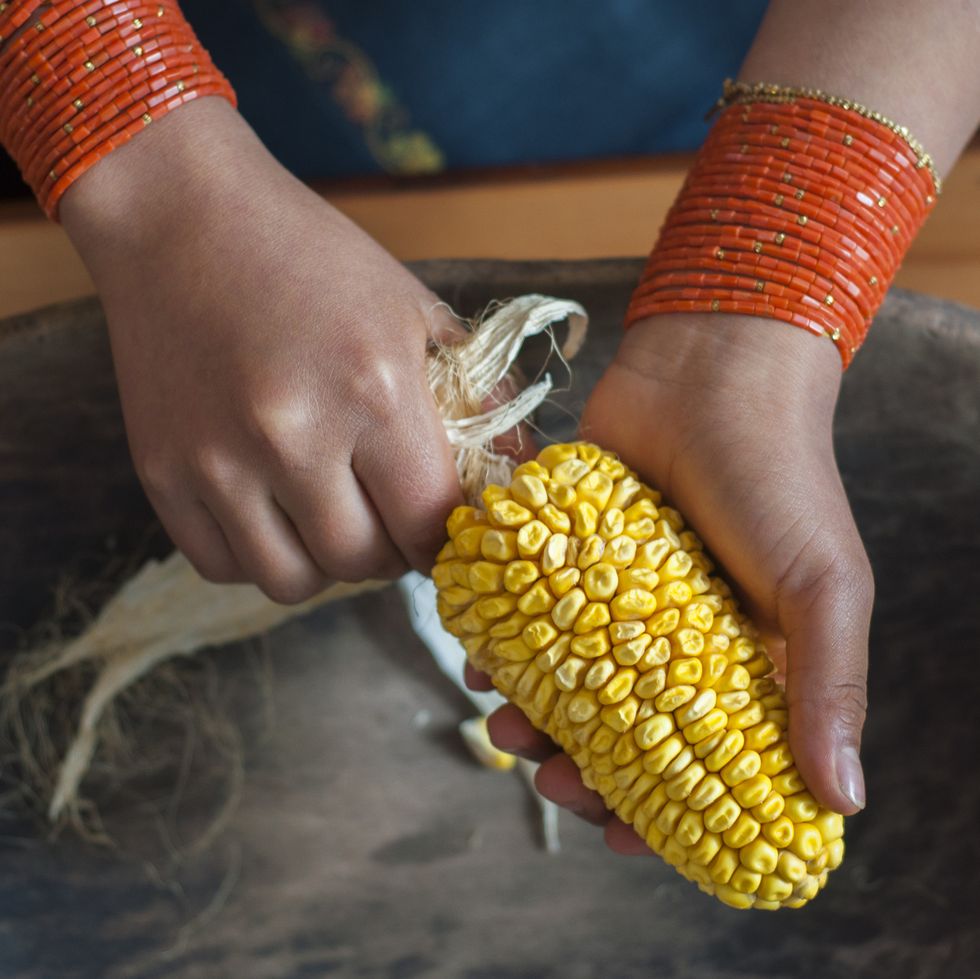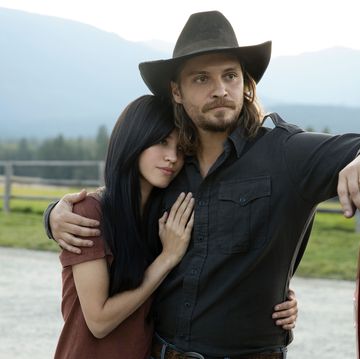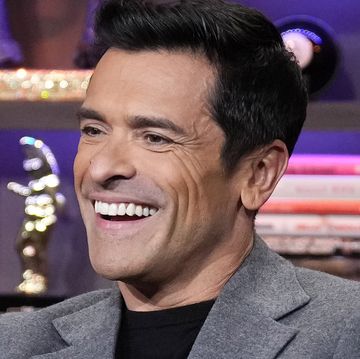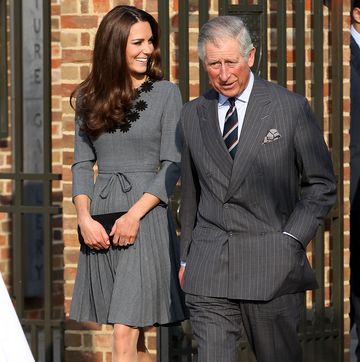Right now, there are 574 federally recognized tribes in the United States, with many more working towards recognition. In the U.S., "Native American" is the most common term for the larger group, but many people prefer to use "American Indian" or "Indigenous American" instead. The National Museum of the American Indian notes that when referring to these groups, it's best to use the individual tribal name when possible. Recognizing tribal affiliation is one way to honor our nation's rich indigenous culture. When in doubt, ask people what term or tribe name they prefer you use.
When you think of an Indigenous American or Native person, what comes to mind? Photos in history books or images of the first Thanksgiving? Native Americans are much more than that.
In fact, there are over 9 million Native Americans and Native Alaskans living in the United States today. And with 575 federally recognized tribes and many more vying for recognition, there are a vast array of cultures that are as unique as the people they represent. From artwork and books and literature to cuisine and music, there is much to appreciate and learn.
Since President George W. Bush’s proclamation making November Native American Heritage Month, also known as American Indian and Alaska Native Heritage Month, we recognize the rich and diverse cultures, traditions, stories and significant contributions of Native peoples, along with acknowledging the population's hardship and struggles both throughout history and continuing today.
If you’re looking for a refresher on Native American populations and why we celebrate their heritage this month (or you're looking for information to share around the Thanksgiving table), here are some interesting facts about Native American Heritage Month and the people it’s meant to celebrate.
American Indian Day started in the early 1900s.
In 1916, Red Fox James, a member of the Blackfeet Nation, rode horseback from state to state to gather endorsements from 24 state governments to establish a day to honor American Indians. This resulted in the very first American Indian Day. It took place on the second Saturday in May 1916 in New York. Dr. Arthur C. Parker, a Seneca Indian who was the director of the Museum of Arts and Science in Rochester, N.Y. at the time, persuaded the Boy Scouts of America to set aside a day for the “First Americans” in 1915, which they adopted for three years.
Native American Heritage Month evolved from a week.
Native American Heritage Month first evolved from "American Indian Week,” which President Reagan proclaimed on the week of November 23-30, 1986. In 1990, President George H. W. Bush approved a joint resolution designating November 1990 as National American Indian Heritage Month. It was later changed to Native American Heritage Month under President Barack Obama.
Indigenous People's Day also recognizes Native heritage.
President Joseph Biden was the first to recognize Indigenous People’s Day as a National Holiday, now held each year on October 11. For many, it's a counter-celebration to Columbus Day, a federal holiday that falls on the same day.
Columbus did not "discover" the Americas.
When Europe "discovered" the Americas, there were already 50 million Native Americans and Indigenous peoples living there. Of that, 10 million were living in what was to become the United States. To say that Columbus discovered the "new world" disregards the rich cultures and complex societies that had already existed here for generations by the time Columbus made his way across the ocean.
Native people were forcibly relocated in the early 1800s.
In 1830, President Andrew Jackson signed the Indian Removal Act, which empowered the federal government to take Native-held land east of Mississippi and forcibly remove Native people from their homes in Georgia, Alabama, North Carolina, Florida, and Tennessee, sending them to “Indian territory” located in what is now Oklahoma.
The Trail of Tears marks an integral part of history.
The Trail of Tears was part of a series of forced displacements of approximately 60,000 Native Americans between 1830 and 1850. Nearly 4,000 people died of disease, exposure and malnutrition during that time. To recognize and remember their history, you can walk parts of the Trail of Tears in Springfield, Missouri.
Native Americans were granted citizenship in the 1920s.
It wasn’t until 1924 that Native Americans were granted citizenship after Congress enacted the Indian Citizenship Act. While Native Americans were also given the right to vote in 1924, it took another 40 years for all 50 states to allow voting rights.
"Chipmunk," "pecan," "skunk," and other common words come from an Algonquian language.
When English explorers first arrived in North America, their first encounters were with the Algonquian people. Not surprisingly, many Algonquian words were adopted by the English, including "chocolate," "potato," and "poncho."
Tribal lands occupy a massive swath of the U.S.
There are approximately 326 Indian land areas in the U.S. administered as federal Indian reservations, covering more than 56 million acres. Currently, there are 574 federally recognized American Indian and Alaska Native tribes and villages.
Cherokee is the largest tribal grouping.
The three largest Native American tribal groupings are Cherokee, Navajo and Latin American Indian tribes. The three largest Alaskan Native groupings are Yup’ik, Inupiat and Tlingit-Haida.
Native people have many unique languages.
There are approximately 175 Indigenous languages spoken in the United States today.
Football teams are changing offensive names.
In 2020, The Washington Redskins changed their name to The Washington Football Team, dropping the previous moniker “Redskins,” a derogatory term often used for those of Native American descent. The Cleveland Indians followed suit and are now known as the Cleveland Guardians.
Navajo people were crucial during the WWII effort.
During World War II, the United States government enlisted the help of skilled Native Americans, known as code talkers, who used the Navajo language to transmit top-secret information to allied forces. Much of this information was classified until 2002 when Congress passed the Code Talkers Recognition Act. Overall, some tribes had as much as 70% participation in the war effort.
The first newspaper in a Native American language was published in 1828.
After the arrival of the Europeans, many tribes began working on written languages. One member of the Cherokee nation, Sequoyah, spent 12 years formulating a writing system so his people could read and write in their own language. This led to the publication of the Nation’s first newspaper written entirely in a Native American language - the Cherokee Phoenix.
Native Americans are responsible for cultivating some of our most important crops.
In 2016, it was estimated that as much as 60 percent of what we eat today was originally domesticated by Native Americans. For instance, corn was cultivated and farmed first by indigenous tribes in Mexico. By the time Europeans arrived in the Americas, Native Americans had been growing corn for thousands of years.
We owe our Constitution to the Iroquois.
It's not just goods we use daily that we owe to Native innovation. Historians believe the United States Constitution was modeled after the “The Great Law of Peace,” the constitution that governed the Iroquois Confederacy. Benjamin Franklin was said to have studied it in detail as inspiration for the Constitution we adhere to today.
